
The Sea of Single-Use Plastic
For decades, the debris of single-use plastics has troubled our ecosystems. Plastics are used daily, commonly observed in the form of shopping bags, disposable cutlery, straws, soda and water bottles, coffee stirrers, food packaging, and so on. Around 300 million tonnes of plastic are discarded every year– and half of it is disposable. Only around 10 to 13 percent of plastic items are recycled. The immediate step to a resolution seems clear: We must reduce our plastic usage, embrace sustainable products on a large scale, and adopt strategies and technologies that facilitate more effective recycling.
Plastics Can’t Be That Bad, Right?
The presence of petroleum in disposable plastic makes it tough to recycle, as new chemicals and raw materials are needed every time. Moreover, only a limited number of items actually incorporate recycled plastic. Petroleum-based plastic is non-biodegradable and ends up either in landfills or finds its way into water bodies like the ocean. Plastic takes years and years to degrade, and during this time, it releases toxic chemicals that also make their way into our food and water supplies. These poisonous chemicals are now being discovered in human bloodstreams – with research revealing that they disrupt the endocrine system. This could potentially cause infertility, birth defects, cancer, and several other illnesses.
Diese Geschichte stammt aus der Issue 02 - 2020-Ausgabe von Asian Diver.
Starten Sie Ihre 7-tägige kostenlose Testversion von Magzter GOLD, um auf Tausende kuratierte Premium-Storys sowie über 8.000 Zeitschriften und Zeitungen zuzugreifen.
Bereits Abonnent ? Anmelden
Diese Geschichte stammt aus der Issue 02 - 2020-Ausgabe von Asian Diver.
Starten Sie Ihre 7-tägige kostenlose Testversion von Magzter GOLD, um auf Tausende kuratierte Premium-Storys sowie über 8.000 Zeitschriften und Zeitungen zuzugreifen.
Bereits Abonnent? Anmelden
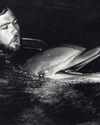
The Sea Specialist: An Interview With Bret Gilliam
Most people learn to crawl before they walk, but there is a man who learned to swim before taking his first steps. Diver, entrepreneur, writer, athlete, maritime specialist – Bret Gilliam is the complete package. Just add water.

The Best Of Diving In Southeast Asia: Explore The Amazon Of The Seas
Southeast Asia encompasses the world’s most biodiverse reefs and some of the best diving anywhere on the planet. From the tiniest and rarest critters to huge fish schools and the biggest pelagics, the region has it all, and there’s something to suit divers of any level.
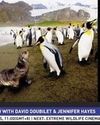
Below With David Doubilet & Jennifer Hayes
Best known for their work with National Geographic, David Doubilet and Jennifer Hayes came together to discuss their work with the youth, and, as Jennifer put it, “submerging with the emerging talent”.
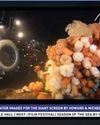
Underwater Images For The Giant Screen
Howard and Michele Hall are best known for their success in underwater IMAX filmmaking.

Journey To Filming For National Geographic Wild Brazil
Cristian is an acclaimed and highly versatile Brazilian wildlife filmmaker who works both underwater and topside.
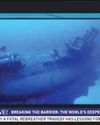
Breaking The Barrier: The World's Deepest Dive
David Strike shared a brilliant presentation about the history of deep diving and how Lt. George Wookey achieved the world’s deepest dive in 1956 using a surface-supplied rebreather.
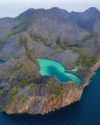
Dive the Golden Land
The Best of Diving In Southeast Asia

OFFICIAL LAUNCH OF BLUE HOPE
Top Session of the Week (14,319 (Views) / 42,831 (Reach)
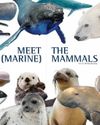
MEET THE (MARINE) MAMMALS
MEET THE (MARINE) MAMMALS

Fashion Faux Pas
What can be done to mitigate the impact of the garment industry on our oceans?